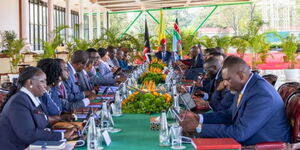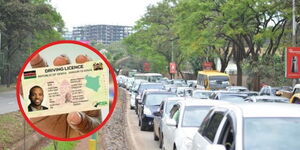The Communications Authority of Kenya (CA) has published revised programming guidelines that will govern broadcast content for both television and radio.
In the 4th edition of the Programming Code for Broadcasting Services, which CA Director General David Mugonyi announced on Friday, March 8, media houses will adhere to fresh guidelines for the coverage of elections, advertisements, content for children, and religions.
The guidelines are set to come into effect in the next 30 days.
Kenyans.co.ke outlines the notable guidelines that will govern these areas as detailed below;
Advertisement
In the new guidelines, the use of "News Flash" or "breaking news" before the beginning of an advertisement will be banned. The ban on all forms of advertising for cigarettes, cigars, and other tobacco products has also been extended.
Meanwhile, advertisements will not exceed 10 minutes in any 30 minutes of broadcasting.
"Advertisements should not unfairly attack or discredit, directly or by implication, any other advertisers, products, or advertisements," read the regulations in part.
Elections
On the election coverage, the new guidelines media houses will be required to apply consistent rates for airtime allocated to politicians and political candidates.
Additional media houses are required not to be biased towards a political party, coalition or candidate.
"All broadcasts of election propaganda shall be identified through the words “paid for by” followed by the name of the candidate, and political party for whom the propaganda is being broadcast.
"Broadcasters shall ensure that political messages do not contain attacks on individuals, their families, ethnic background, race, religion or their associations," read the guidelines in part.
Children
In line with the protection of children, animations which are centred on violence as the main theme will not be aired.
The new guidelines also discourage the airing of music videos with harmful lyrics, images and dress between 5 am and 10 pm.
"The transition from family-oriented to adults-only programming after the watershed period of 10 pm shall be gradually executed. For subscription and pay-per-view services, mechanisms put in place to protect children must be clearly explained to subscribers," the guidelines read.
Additionally, unplanned and surprise interviews have been banned.
Crime and Accidents
In the coverage of crime events, live coverage for incidents like hostage-taking, hijacking or kidnapping will be limited. It was explained that such actions can put the lives of of the victims in further danger.
"The identity of victims of crimes or crises in progress shall not be announced until the situation has been resolved or their names have been released by the authorities. The names of the fatalities should be released only when their next of kin have been notified or their names released by the authorities," the guidelines outline.
Religious Content
The new guidelines bar the airing of religious programmes that maliciously attack, insult, harass, or ridicule other churches, faiths, sects or denominations or their followers because of their beliefs
Media houses are also guided to censor programmes that exploit any susceptibilities of the audience.












